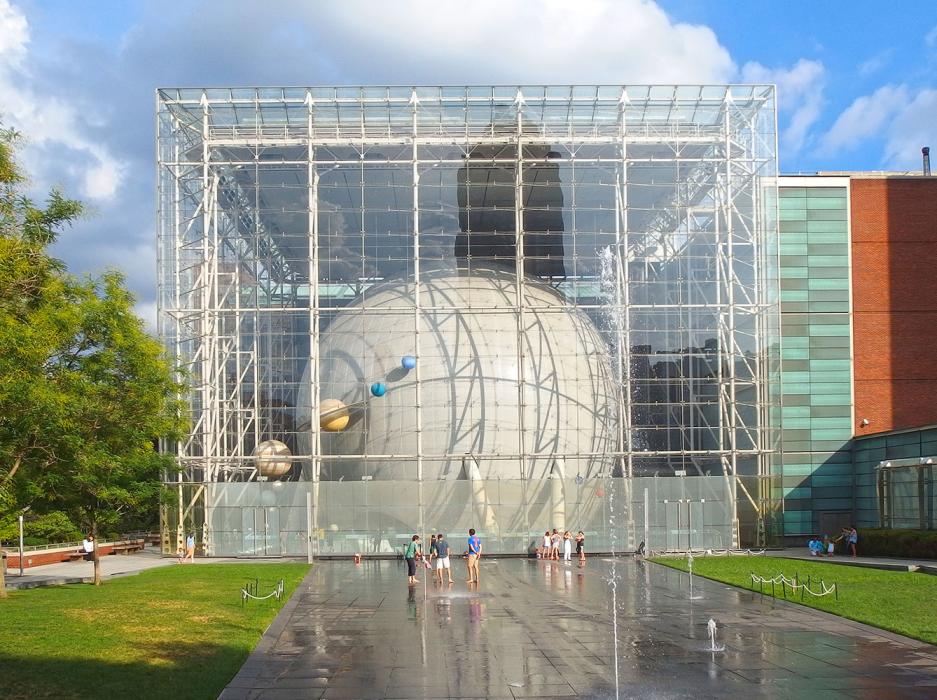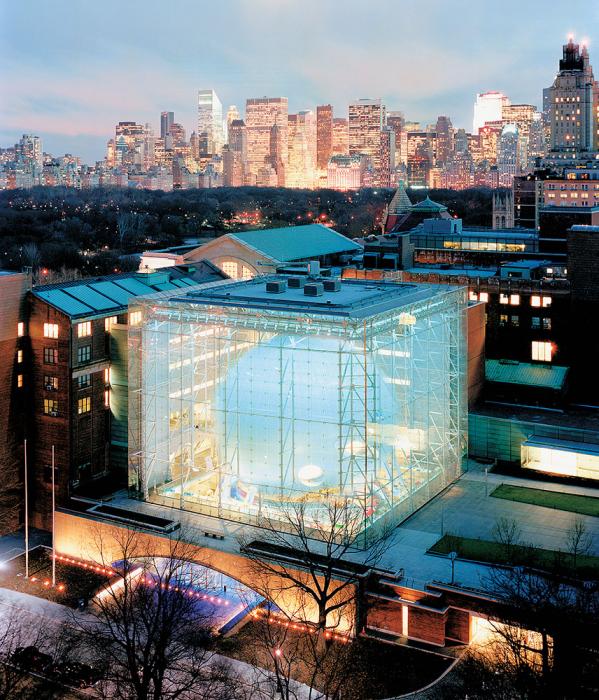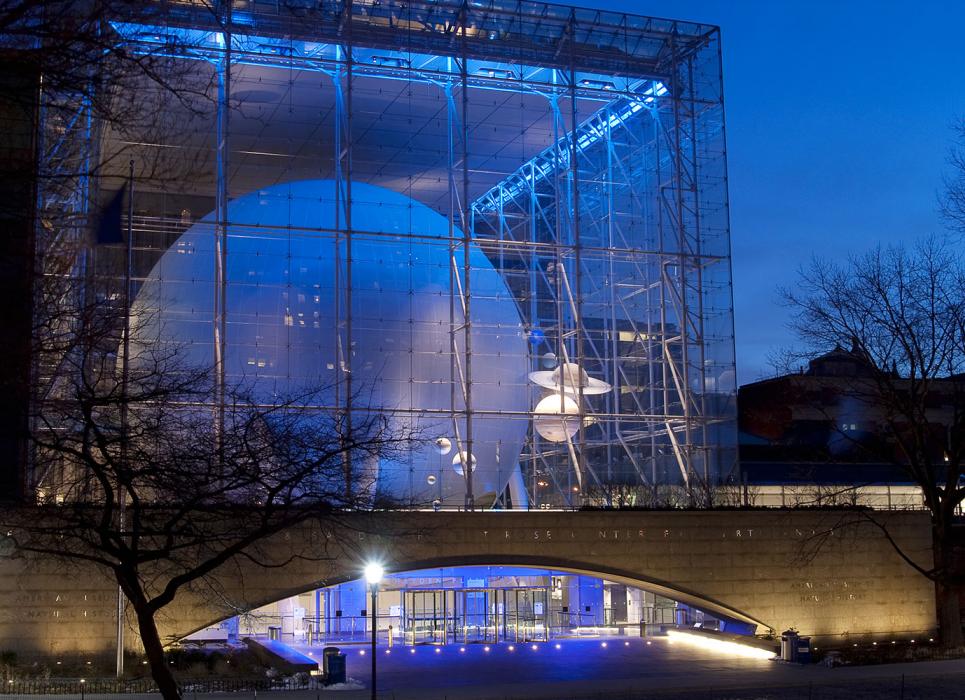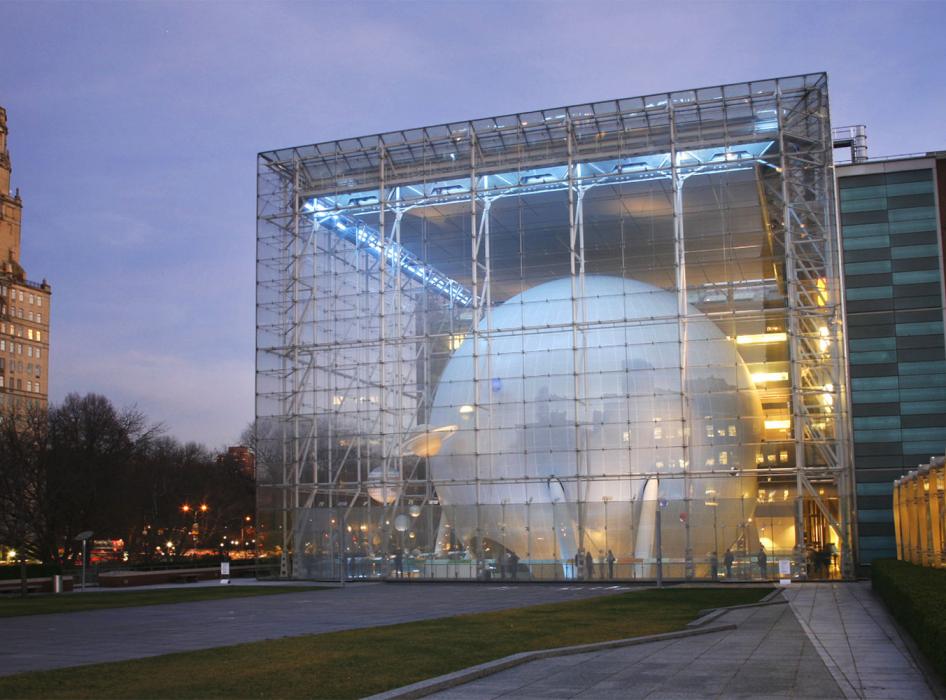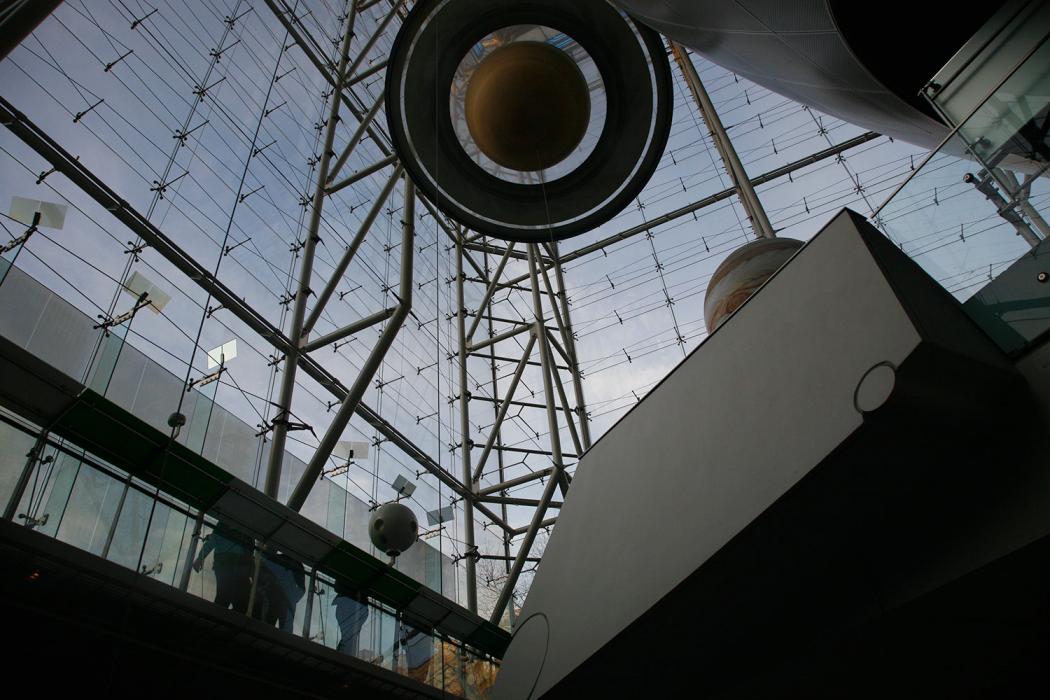Rose Center for Earth and Space
The Rose Center for Earth and Space prominently features the spherical Hayden Planetarium enclosed in a mullionless six-story cube with tension-supported glass curtain walls.
Project Details
AIA, National Honor Award for Architecture, 2002
AIA-NY, Award for Excellence in Design, 2002
Time Magazine, Best in Design, 2000
Concrete Industry Board, Award for Design Excellence, 2000
Designing a Modern Gateway to the Universe for the World’s Largest Natural History Museum
Opened in 1935, the Hayden Planetarium in Manhattan was a crucial part of the American Museum of Natural History and an important resource for city residents and researchers to observe the constellations and other celestial activities. In need of structural renovations and technological upgrades, the Planetarium closed in 1997 and reopened in 2000 as The Frederick Phineas and Sandra Priest Rose Center for Earth and Space. The new building prominently features the spherical Hayden Planetarium enclosed in a mullionless six-story cube with tension-supported glass curtain walls.
We provided structural design services to the Polshek Partnership for this 300,000-square-foot landmark cultural institution, which opened in 2000.
The new Rose Center brings us face to face with something commensurate to our capacity for wonder… this is a mature modern building, a structure unafraid of revealing the deep roots from which modern architecture arose.
Highlights
- The suspended glass curtain wall, entirely tension-supported, is among the first of its size to be built in the United States.
- The hanger rods, arced rods, struts, and spiders that form the glass wall increase the aesthetic appeal of the entire structure.
- The 87-foot-diameter Hayden Sphere appears to float inside the cube but is supported by three pairs of 60-foot-long tapered steel legs.
- The legs also anchor a dramatic ramp that connects the sphere to the first level of the museum.
- The top half of the sphere houses the Sky Theater, with its dome, and the bottom half houses the Big Bang Theater.
- The size of the sphere ruled out the use of supporting columns. Instead, two-way roof trusses and unique wall trusses support the glass curtain walls.
- An ingenious vertical and horizontal tension-truss system that resists wind forces holds the panes of glass in place.
- An adjacent, partially buried three-story parking structure for 300 vehicles is topped with a planted terrace and upper-level access to the Rose Center.


